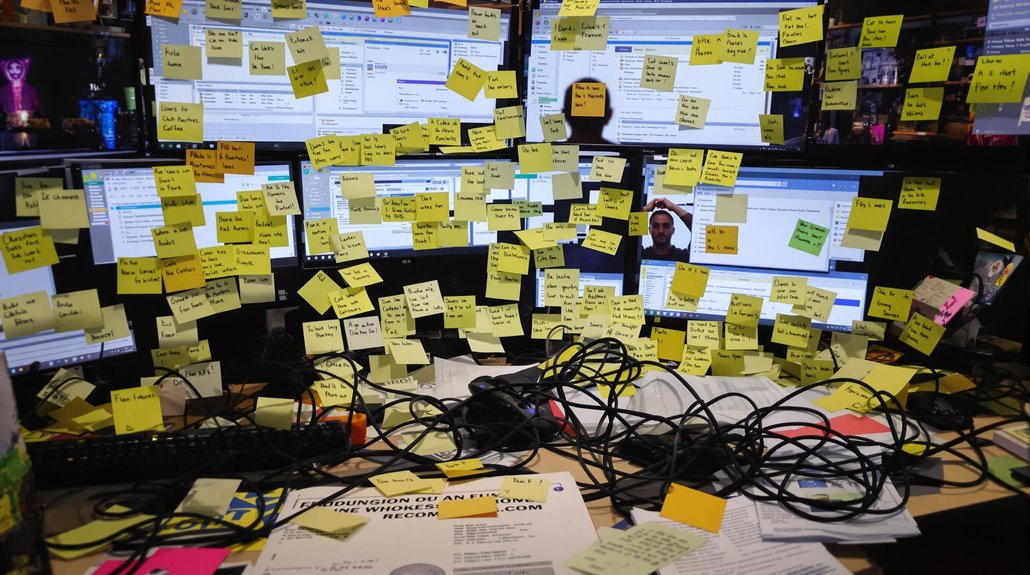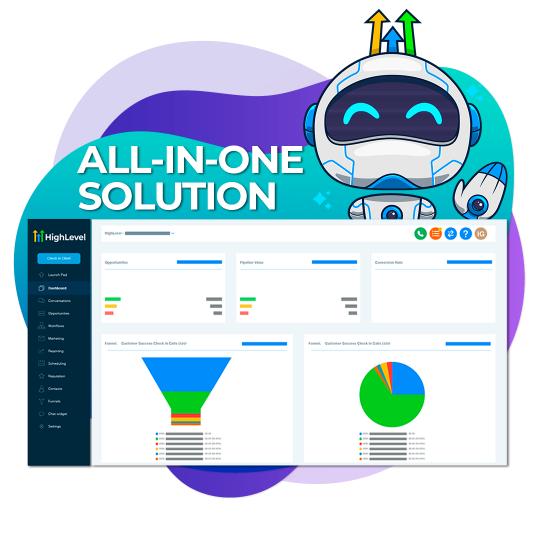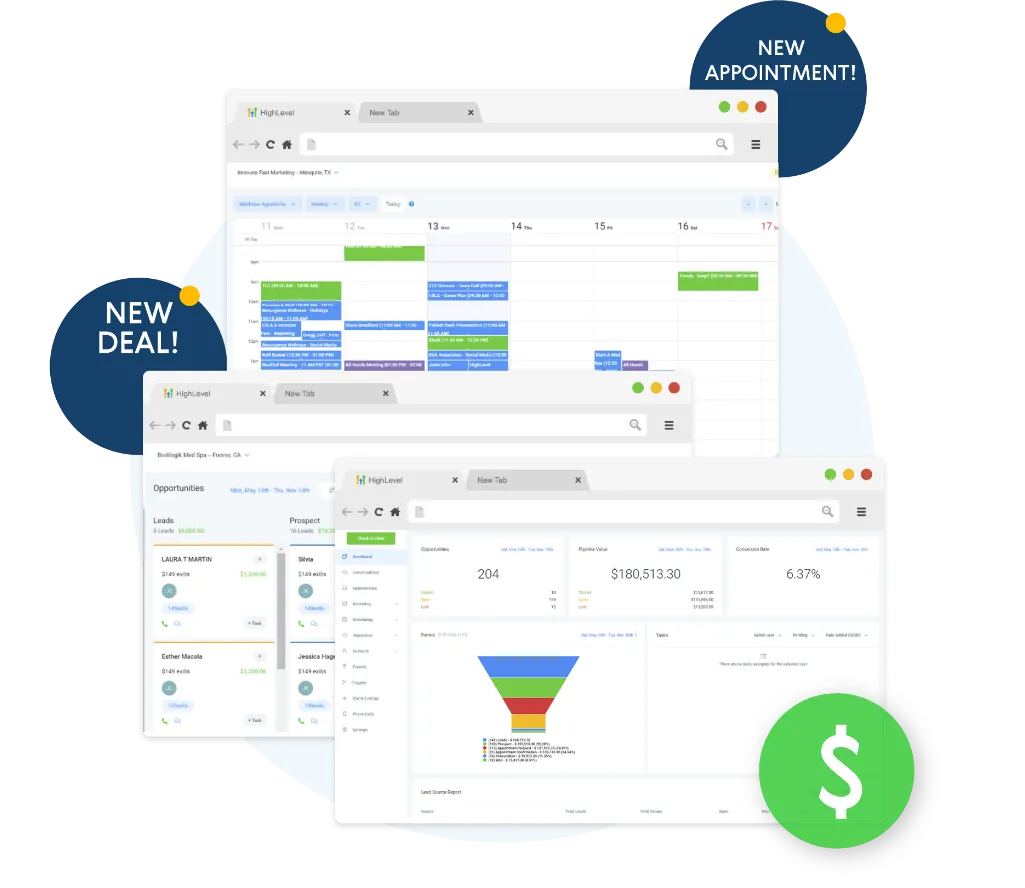Your CRM system is like a helpful friend at work. When you try to change it too much, it can get confused and stop working well. Think of it like putting too many stickers on your bike – it might look cool, but it makes it harder to ride.
Making small changes is OK. But big changes can break things. It costs a lot of money to fix – like buying a new car! The price can be between $40,000 and $120,000.
When you add too many bells and whistles, your team might get lost. They won't know how to use the system. It's like having too many TV remote buttons – no one knows which one to press.
The best way is to keep things simple. Make only the changes you really need. This way, your CRM will work better and help your team do their jobs.
Remember: A simple CRM that works is better than a fancy one that doesn't.
Feeling overwhelmed by missed leads and disorganized workflows?
Discover the award-winning platform that automates follow-ups, tracks every lead, and keeps your business running smoothly—all in one place. Thousands of businesses are already transforming their sales and marketing with this trusted solution. Don’t miss out—start your 14-day free trial today and click now to uncover exclusive, limited-time special offers!
Understanding CRM Customization Risks
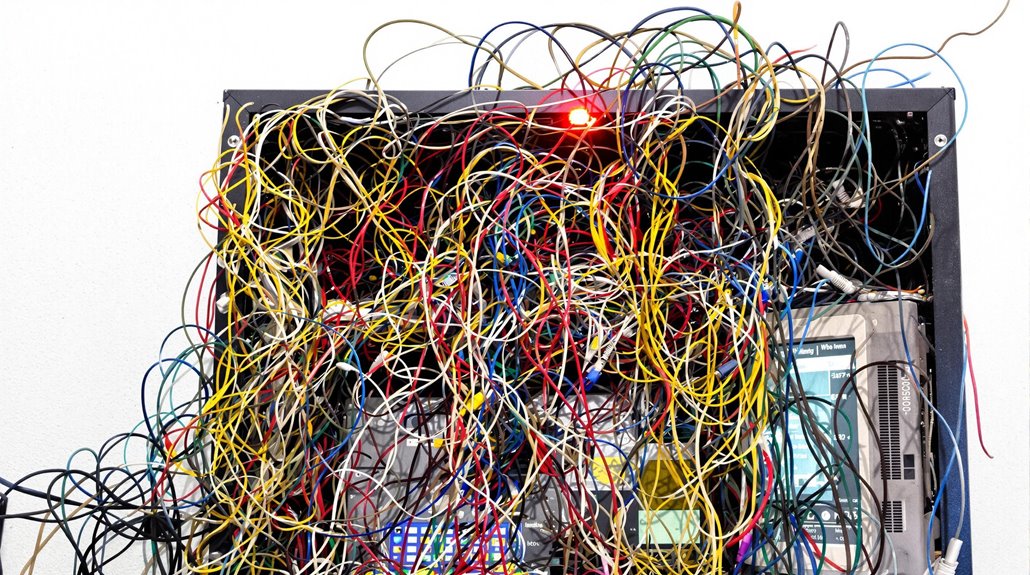
We need to be smart when we make changes to our CRM system.
Think of CRM like a house – small fixes are fine, but big changes can cause big problems.
When we make too many changes, bad things can happen. The system might break when it needs updates.
It's like trying to fit a square peg in a round hole – it just won't work right.
If we change too much, we can get stuck doing things the old way. Only a few people might know how to use the special changes.
This makes it hard to grow or try new things.
The worst part is when changes hurt the whole system. Sometimes we've to start over from scratch.
This costs a lot of time and money.
Before we make any changes, we should ask: Do we really need this?
Will it work when we update the system?
This helps keep our CRM safe and working well.
The True Cost of Customization
Understanding the Real Cost of Making Your CRM Special
When you make your own CRM system, you spend more money than you might think. It's not just about building it – you have to keep it running, teach people how to use it, and fix it when things break.
Building a new CRM can cost between $20,000 and $200,000 to start. But that's just the beginning.
Think about these costs:
- Hiring helpers costs different amounts. In Eastern Europe, you pay $40 each hour. In America, you pay $150 each hour.
- Most CRMs need about 1,000 hours to build.
- You must fix problems when they pop up.
- You need to teach your team how to use it.
- You must pay people to keep it safe and working.
Ready-made CRMs are different. They cost between $12 and $300 for each person each month. These costs stay the same and are easier to plan for.
Ready to simplify your business operations?
Streamline your workflows and boost productivity with a CRM designed to save you time and effort. From tracking leads to automating follow-ups, this platform does it all. Discover what’s possible—learn more about how it works and see why so many businesses rely on it every day.
When Standard Features Become Unrecognizable
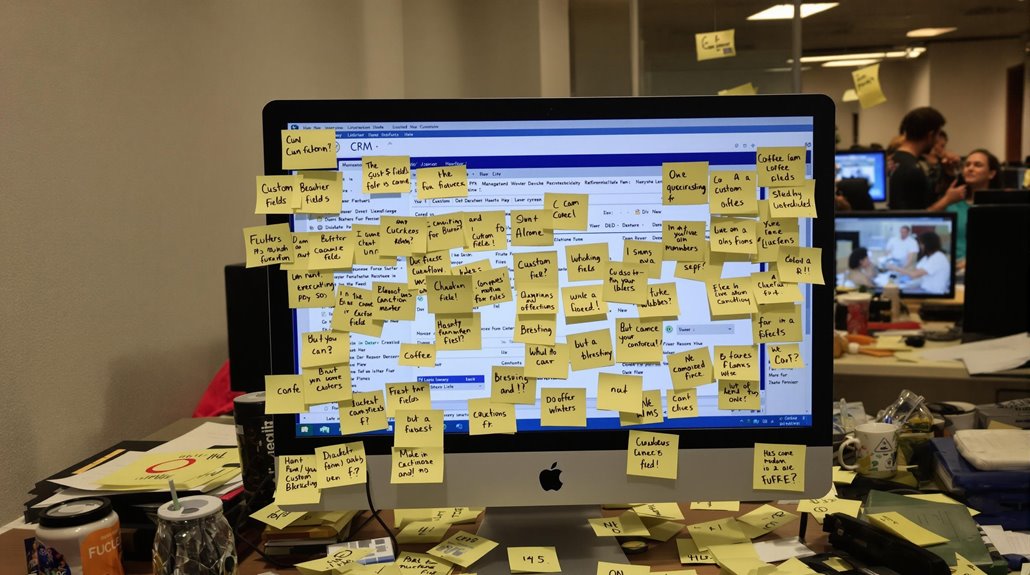
Using too many fancy add-ons can make simple CRM tools hard to use. Think of a bike with too many bells and whistles – it stops being fun to ride.
When you add too many extras to your CRM, basic tasks get messy. Your team will take longer to do simple jobs. They might feel lost trying to find what they need.
When the CRM gets updates, your extra parts might stop working. Then you have to pick: keep fixing the complex parts or go back to the basic tools.
Your team needs more time to learn all the new parts. And when you try to connect your CRM with other tools, it gets stuck. This means your team can't share info well, and your CRM becomes less helpful.
Still struggling to keep your business organized?
Take the guesswork out of managing leads and follow-ups with a platform trusted by thousands of businesses. Say goodbye to missed opportunities and hello to a seamless sales process. Act now—try it free for 14 days and discover how easy it is to stay on top of your workflow. Don’t wait—exclusive offers won’t last long!
Breaking the Upgrade Path
Too much change to your CRM system creates problems. Each time you add custom parts, you make it harder to get new updates.
Think of it like building a house. If you change too many parts, regular repairs won't fit anymore. You can't upgrade your system like others can. Your special features might stop working.
To keep your system safe, keep track of what you change. Write down all the custom work you do. Keep the main parts of the system away from the custom parts you add.
Technical Debt Piles Up
Technical debt is like a messy room that keeps getting messier. When teams take shortcuts to fix things fast in their CRM systems, problems start to pile up.
Think of it like adding too many stickers to a clean notebook. What looks nice at first can make a big mess later.
This mess makes it hard for your team to do good work:
- Teams work slower because they've to deal with messy code
- Fixing things costs more money as the system gets more complex
- New tools are hard to add because old ones get in the way
- Safety rules become harder to follow
- The system breaks more often and runs poorly
You can stop this mess from growing. Use basic tools that everyone knows.
Write down how things work. Keep your system clean and simple. This way, your CRM will stay strong and useful for a long time.
Future Updates Become Impossible
Your CRM can get stuck if you change it too much. Think of it like building with blocks – if you use pieces that don't fit, you can't add new blocks later. When you make changes that the maker doesn't support, you create problems for future fixes.
These changes might work now, but they can break when new updates come out. Your CRM needs to grow and get better, but bad changes stop this from happening. You might lose data, have the system go down, or see it act funny.
The worst part? You'll have to spend lots of money fixing code just to keep your changes working.
To stay safe:
- Write down all your changes
- Only make changes the maker says are OK
- Test your system with new updates
Each time you make a change the maker didn't plan for, you make it harder to get better updates later.
Isolating Core System Functions
Your CRM system has three main jobs – keeping your data safe, making work flow smoothly, and letting you use the system easily.
When you change these basic jobs too much, you risk breaking your system.
Think of it like building a house. If you move the walls too much, the whole house gets shaky. The same thing happens when you change your CRM too much:
- The system might stop working when it needs to update
- Your data could get mixed up when you move it
- New parts mightn't work with old parts
- Bad people might find ways to get into your system
- Fixing problems gets harder and costs more money
The best way to keep your system strong is to use what comes with it.
Only make changes when you really need them for your work.
User Resistance and Training Challenges

Your team will find it hard to learn a CRM system with too many special features.
People need more time to figure out how to use tools that aren't like the ones they know. Workers might give up trying to use the CRM if it feels too hard to use.
When staff spend lots of time learning tricky new tools, they can't do their normal work well.
Keep it simple so your team can focus on helping customers instead of fighting with complex systems.
Training Takes Longer
When you make lots of changes to your CRM system, training your team takes more time. People need extra help to learn all the new tools and steps.
Think about how a new person learns to ride a bike. They need time to practice and feel safe. It's the same with a changed CRM system.
Your team will need:
- New training that fits the changes
- Different lessons for each work group
- Time to try out the system
- Extra practice days to stay sharp
- Help when the system gets updates
To help your team learn well:
- Make clear training plans
- Show real work examples
- Let people practice often
- Ask what help they need
- Keep teaching as things change
When people get good training, they use the system better. This makes work easier for everyone.
User Adoption Drops Sharply
Teams stop using CRM systems when they feel left out. If you change too much without asking your team what they want, people won't want to use it.
To fix this, talk to your team. Ask them what they need. Make the screens simple and easy to use. Let people set up their own views that help them do their jobs better.
When people help make changes, they feel good about using the system. Leaders should show they care by joining in and helping teams work together. This makes everyone want to use the CRM more.
Productivity Losses Mount High
When CRM systems get too complex, your team slows down. Simple tasks take longer because the tools are hard to use.
Think about these problems:
- People need weeks to learn the system instead of days
- Workers get mad because the system is too hard
- Tech teams can't work on new things
- Too many mistakes happen when entering data
- System fixes take up lots of time
When your tools get too fancy, it hurts everyone.
Tech teams spend all their time fixing problems. Workers get stuck with slow, hard-to-use screens. This makes work take longer and costs more money.
Struggling to keep up with your growing business?
Simplify your processes and stay ahead with a CRM that adapts to your needs. Manage leads, automate tasks, and focus on what matters most—growing your business. Take the first step—explore the features today and see how it can transform the way you work.
Security Vulnerabilities in Custom Systems
When you make lots of changes to your CRM system, it can create safety problems.
Think of it like adding many doors to your house – each new door needs its own lock to stay safe. When you add too many new parts to your system, it gets hard to keep it safe from bad people.
Each time you connect your system to other tools, you make a new way for people to get in. It's like leaving windows open in your house. You need strong locks, like passwords and safety checks, to keep your data safe.
If bad people get into your system, you could lose money and trust. Your friends and customers mightn't want to work with you anymore. You might even get in trouble with the law.
Remember to keep your system simple and safe. Don't add so many new parts that you can't lock all the doors.
Maintenance Nightmares and Support Issues

Your CRM can turn into a real headache if you add too many custom parts. Think of it like a big puzzle where new pieces don't fit well with the old ones. This can cost you a lot of money – from $40,000 to $120,000.
When a CRM has too many special changes, you might run into these big problems:
- New updates break your old changes
- Your system gets slow and hard to use
- You need special help to fix things
- Your team needs more training all the time
- The whole system works less well than before
Just like a car that has too many odd parts added to it, your CRM can stop running smoothly. You need more time and money to keep it working right.
The basic system wasn't made to handle all these extra parts, so things can break down and work less well.
Scalability Problems With Custom Solutions
Your CRM system can get stuck when you change it too much.
Think of it like building with blocks – the more special pieces you add, the harder it gets to keep them all working. As more people use it, things slow down. Users get mad when they've to wait.
When you link your CRM to other tools, it's like making a big spider web. Each new link makes the web harder to fix. The costs go up fast when you need to update or fix these special parts.
Sometimes you even need to start over from scratch.
Growing Pains Cost More
When your CRM system gets too big, problems start to show up. Think of it like a growing child who needs bigger clothes and more food. Your custom CRM needs more care and money as it gets bigger.
These are the big problems you'll face:
It costs more to fix things.
You need more people to help run it.
The system gets slower.
You have to keep it safe from bad people.
It gets harder to work with other tools.
The good news is you can stop these problems. Start by using cloud tools that can grow with you. Also, build your system in small parts that work together. This way, when one part needs to change, you won't have to fix the whole thing.
Before you make any changes to your CRM, think about what'll happen later. Ask yourself if your system can handle more people using it and more data coming in. This will help you avoid big headaches down the road.
System Bottlenecks Limit Growth
Growing businesses can get stuck when their customer systems stop working well. Think of it like a traffic jam – when too many cars try to use one small road, everything slows down.
Your team might see these problems when:
- The system runs too slow
- They can't make simple changes
- They've trouble handling more customer data
These problems hurt your team's work and make it hard to talk to each other. It's like trying to fit too many people in a tiny room.
To fix this, pick the right tools from the start:
- Use online systems that can grow with you
- Make sure your tools can work with other tools
- Choose systems you can change as you grow
When you plan ahead like this, your business can keep running smoothly as it gets bigger. It's like building a house with room to add more space later.
Integration Becomes Increasingly Complex
It's tough when your special business tools don't play nice with others. Just like puzzle pieces that don't fit, your tools may not work well together as your business gets bigger.
Think about these problems:
- Your tech team has to fix many connections at once
- Basic connectors mightn't work with your special tools
- Each new link needs lots of work to set up
- Moving data between tools gets harder
- Finding and fixing problems takes more time
You need to ask: "Can my tools grow with my business?"
It's smart to build your tools in small, simple parts. This makes them easier to connect. Many online tools already know how to grow big, and they might work better than making everything yourself.
Remember:
- Keep things simple
- Break big tools into small parts
- Use tools that can grow with you
- Think about how things connect before you build them
Data Integration and Quality Concerns
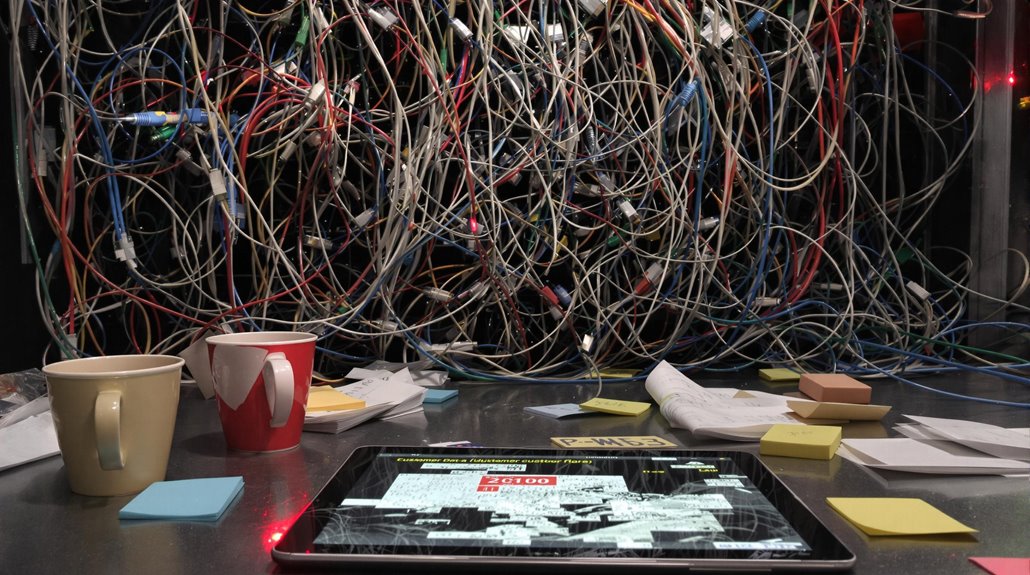
Bad data can hurt how we talk to customers. When companies change their CRM systems too much, it gets hard to see all customer info in one place.
Different teams put data in different ways. This makes it messy and hard to use. Think of it like having many boxes of toys with no good way to sort them.
To fix this, we need simple rules for how we add info. We need to check our data often to make sure it's right.
We also need to connect all our systems so they work as one big team. This helps us keep customer info clean and useful.
It lets us help customers better because we can see what they need right away.
Future-Proofing Your CRM Strategy
Your CRM needs to grow with your business. Think of it like building a house – you want it to last and work well for years to come.
Here's what you need to do:
- Make sure your system can hold more data as you grow
- Use online tools that keep your data safe
- Let computers help you spot trends
- Check your system often
- Make it easy to connect with other tools you use
Your CRM isn't just about fancy tech. It needs to bend and change as your business does.
Look at how it's working every few months. Fix what's not working. This way, your CRM will stay strong and useful.
Remember: A good CRM is like a good friend – it helps you now and sticks with you as you grow.
Keep it simple, keep it working, and keep it up to date.
Conclusion
Think of your CRM like a new toy. We all want to add cool new parts to make it better. But too many changes can break it. Keep it simple! Only add what you really need to help your team do their work. Write down what you change, and make sure everyone follows the rules. This way, your CRM stays helpful and easy to use. Remember: just because you can add something doesn't mean you should.

